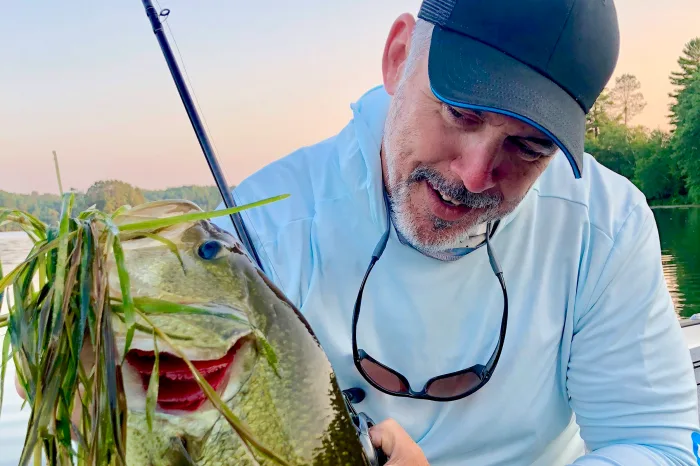Understanding the world of bass involves unraveling the intricacies of their senses and behavior, a task often clouded by anthropomorphism. Anthropomorphism is the tendency to attribute human emotions and behaviors to non-human animals, a concept that has found its way into fishing discussions.
Many anglers, seasoned and amateur alike, have attempted to explain bass behavior by likening it to human actions. This line of thinking is known as anthropomorphism, where human emotions and behaviors are assigned to non-human animals. It’s a natural inclination for humans to project their experiences onto other beings, especially those with eyes, ears, noses, tongues, and skin nerves.
However, the reality is that a bass’s experience of the world significantly differs from a human’s. While they share basic biological senses, the functions of these senses in bass are markedly distinct. For instance, a bass’s eyes can detect motion, known as critical flicker frequency, three times faster than humans. This means their perception of the world, including the movement of a spinnerbait, is fundamentally different.
Beyond sensory disparities, the key differentiator lies in the brain’s interpretation and reaction to these senses. Humans boast relatively large brains, allowing for instant incorporation of memories, emotions, and complex programming into sensory experiences. In contrast, a bass’s brain, while remarkable, lacks the capacity for the same depth of processing.

Despite these differences, bass possess highly efficient sensory systems focused on survival. Their senses quickly interpret signals from prey or lures, searching for crucial indicators. Success in bass fishing hinges on understanding how these senses function and what signals prompt them to strike.
When you cast a red craw-colored Rat-L-Trap, does the bass believe it’s eating a crawfish? Probably not, but that’s inconsequential. Bass are opportunistic feeders, optimizing their senses and brain to efficiently catch suitable prey and survive. Whether your lure resembles a craw, minnow, or T-bone steak is less important than displaying the right feeding cues.
Rather than projecting human behaviors onto bass, anglers should use critical thinking to analyze each catch, identifying patterns that trigger bites. While bass may not comprehend human thought processes, anglers can strive to understand how bass think, leading to more successful fishing endeavors.
Images/Source: Men’sJournal





